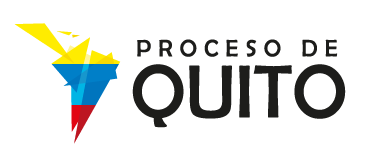How to successfully address vulnerabilities, beyond migration and asylum
The inclusion of indigenous people, homeless people, people of african descent, and people with disabilities in the formulation of public policies is essential for its success.
By Ana Gama and Isadora Zoni
Brasília, 5 May 2022 — It is clear for the Quito Process that among refugees and migrants there are specific vulnerable groups that need a special approach.
To advance recommendations in their favor, the webinar addressed four groups in vulnerable situations: Afro-descendant population, indigenous population, people living in homelessness and people with disabilities. But, as Prof. João Carlos Jarochinski Silva (UFRR) pointed out, there are other vulnerabilities besides these four groups, which can overlap and coexist.
The Pro Tempore Presidency of Brazil identified the need for a space for exchange and learning on cross-cutting issues of common interest for the member countries of the Quito Process, which gave rise to this webinar in which member countries, officials from various governing bodies and representatives of civil society participated.
Designed to discuss the issue of Venezuelan refugees and migrants in an added situation of vulnerability, it had the participation of 92 people and was divided into two moments; the first, with presentations by experts in vulnerable groups (link) and, secondly, the division of participants into smaller groups in discussion rooms.
People with Disabilities - Discussion link
People in Homelessness - Discussion Link
Indigenous Population - Link to the discussion
Afro-descendant Population - Link to the discussion
As for the homeless population, Lydia Stazen, executive director of the Institute of Global Homelessness (IGH), said that the global situation of homelessness includes not only refugees and migrants in shelters, but also highlights that they may be living on the streets, in shelters or temporary places, or in unsafe and inadequate housing. Yanella Posente, director of the Latin American Network of Homeless People, highlighted the importance of changing the paradigm of understanding the situation of homeless people to the need to guarantee the right to housing.
Regarding the indigenous population, it was highlighted how the Warao indigenous people have a specific characteristic of movement in large groups, with the presence of children and the elderly, which generates specific demands, such as insertion in the school system and health care.
Mônica Ervolino, from the State Secretariat for Human Development of Paraíba, brazil, shared the creation of an emergency accommodation service for Warao indigenous people in early 2020, promoted by the Federal Public Ministry, and through an alliance with a civil society organization. This has demonstrated the importance of thinking about durable solutions. The R4V Brasil platform led the group discussion on the topic, highlighting the importance of articulation with civil society.
IOM's Julio Croci presented the study carried out in 5 Latin American countries on Afro-descendant Venezuelan migrants and refugees and highlighted the importance of knowing the phenotypic dynamics of the place of destination, because in addition to xenophobia there is also racism that hinders the prospects of integration. Audrey Mena, of the Colombian organization Manos Unidas, highlighted how inequality is a historical and structural characteristic of all Latin American and Caribbean societies, and in one way or another it is maintained and reproduced even in periods of economic growth and prosperity, which includes African Americans, descendants of Venezuelan refugees and migrants.
On people with disabilities, Antony Duttine (PAHO/WHO) pointed out that 15% of the general population has some disability, so public policies that are not inclusive can potentially leave aside and lose this portion of the population. In addition, he stressed that the most important recommendation for the formulation of public policies for people with disabilities is the inclusion of people with disabilities from the beginning of the process.
Some reports mentioned at the event on people with disabilities were:
- Working with People with Disabilities in Forced Displacement (link)
- Disability and Human Mobility (link)
- Labor Inclusion of Migrants with Disabilities (link)
The representation of affected persons in the formulation of public policies was a common conclusion of all the speakers. In addition, other common themes were the collection of disaggregated data on populations, the definition of the scope of action, the establishment of goals and objectives and the consideration of intersectionality.

